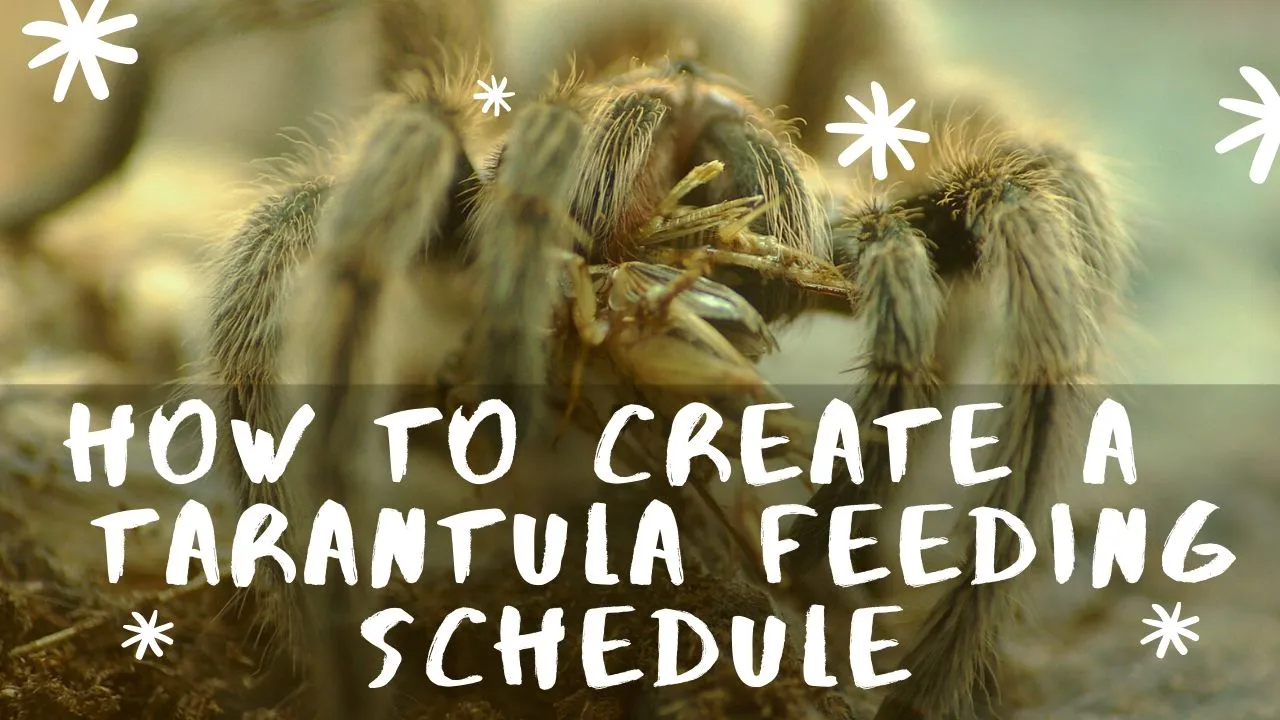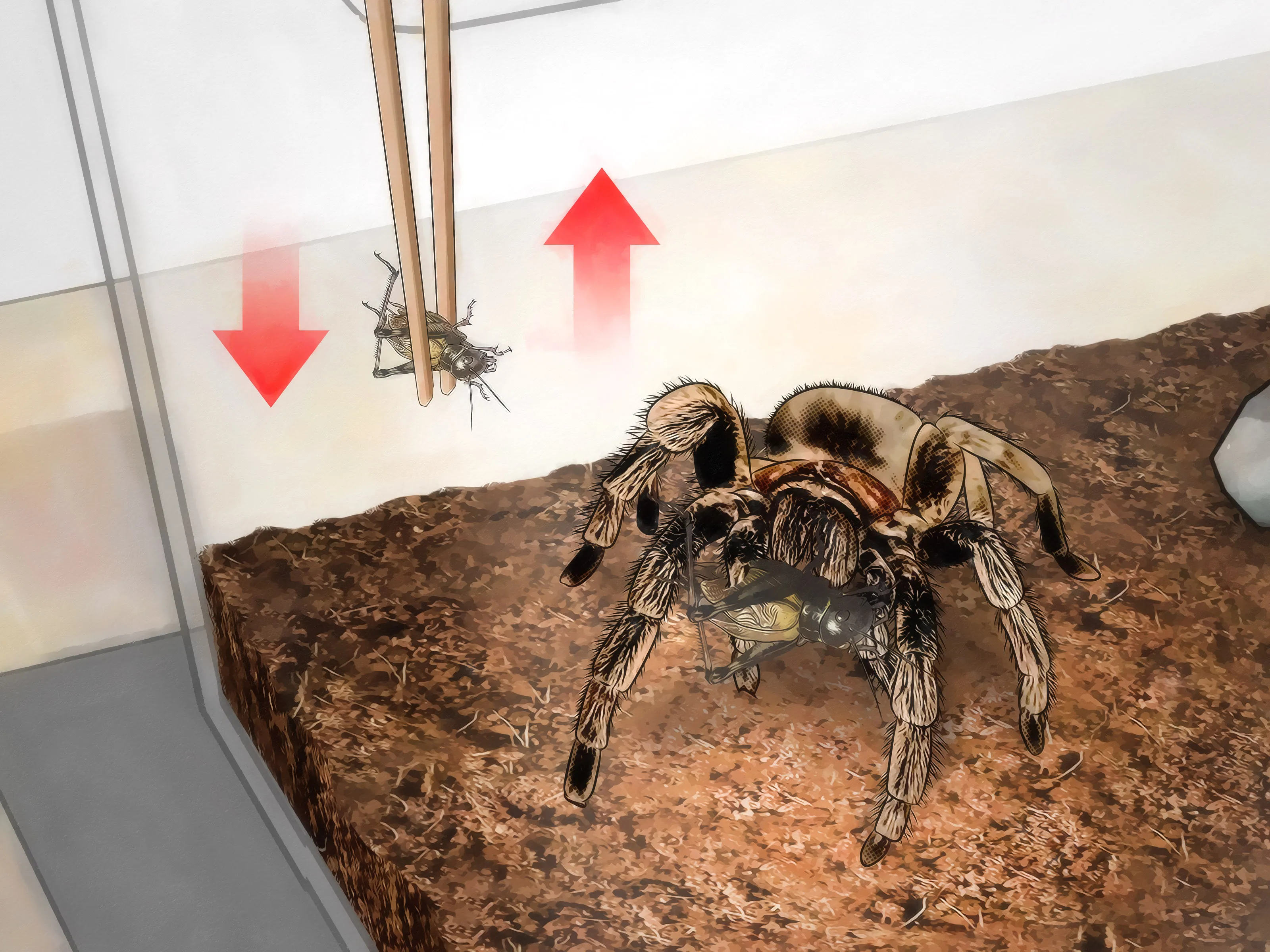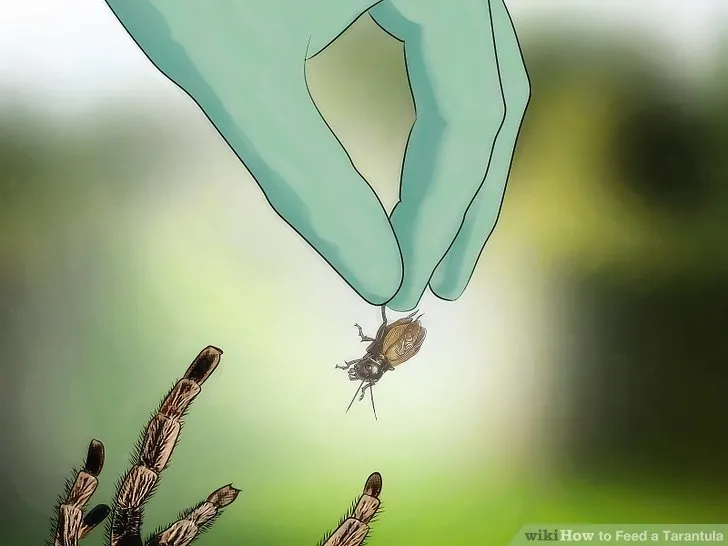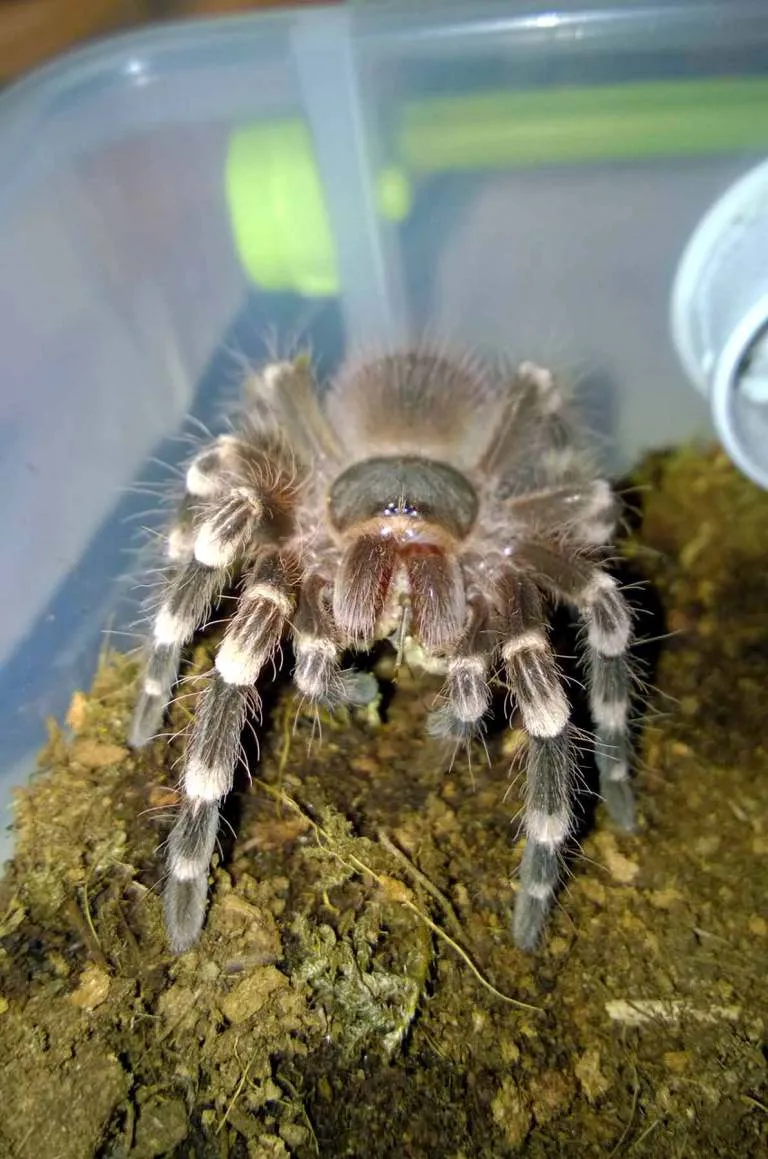What Influences Tarantula Feeding?
Understanding the factors that influence how often to feed your tarantula is crucial for responsible pet ownership. Several elements play a significant role in determining your tarantula’s appetite and feeding requirements, including its species, age, and overall health. Environmental conditions like temperature and humidity also have a notable impact on the tarantula’s metabolism and feeding habits. A tarantula’s feeding schedule isn’t just a matter of routine; it’s a dynamic process that demands your attention and observation. It’s important to regularly assess your pet’s needs and adjust the feeding frequency accordingly to ensure its well-being. Inadequate or excessive feeding can lead to various health problems, underscoring the significance of a well-informed approach to tarantula care.
Tarantula Species and Their Dietary Needs
Different tarantula species have varying dietary requirements, which makes it essential to research the specific needs of your particular pet. Some species, such as the fast-growing ones, may require more frequent feeding than others. For example, certain species of tarantulas from tropical environments may need more frequent feeding during warmer months, as their metabolism tends to increase in higher temperatures. On the other hand, species from cooler climates might naturally eat less often. Researching your species’ natural habitat and eating habits can offer valuable insights into their dietary needs. This will help you to replicate their natural feeding patterns, providing the ideal care for your tarantula. Proper research contributes directly to your pet’s overall health and longevity, avoiding common issues related to improper feeding practices. Consider factors like the tarantula’s size, activity level, and any known health conditions, as these can influence their individual dietary needs.
How Often Should You Feed a Juvenile Tarantula?

Juvenile tarantulas, being in their growth phase, require a more frequent feeding schedule than adults. Generally, juvenile tarantulas should be fed every 3 to 7 days. This frequency supports their rapid development and helps them shed their exoskeletons. The exact frequency depends on the species and their growth rate. You must also consider the size of the prey offered; the prey should be appropriately sized, preferably no larger than the tarantula’s abdomen. Overfeeding, even in juveniles, can lead to health problems, so monitor your tarantula for any signs of overeating or lack of appetite. Regularly inspect your juvenile tarantula for changes in its abdomen size or any indications of a refusal to eat. Proper feeding in this stage sets a foundation for a healthy adult life. Make sure to supply fresh water daily and adjust feeding based on your pet’s specific needs.
Frequency for Sub-Adult Tarantulas
As your tarantula transitions into the sub-adult stage, the feeding frequency can gradually decrease. At this stage, you can start reducing feeding to once every 7 to 10 days. This adjustment is because the growth rate slows as they approach maturity. You must still pay close attention to their appetite and physical condition. The tarantula’s abdomen should maintain a healthy fullness without appearing excessively large. Prey size remains crucial; continue to offer prey items that are appropriate in size, preventing both underfeeding and overfeeding. Monitoring your sub-adult tarantula during this phase is critical, as it prepares for the transition to adult feeding. Sub-adults are still growing, but at a slower pace compared to juveniles, so their feeding requirements change. Ensure they have access to a clean water source to support their overall health and promote successful molting.
Adult Tarantula Feeding Schedule
Adult tarantulas generally require the least frequent feeding schedule. Most adult tarantulas can thrive with feedings once every 10 to 14 days, and some may only need to be fed once or twice a month. Factors such as species, health, and environmental conditions can affect these parameters. Monitoring the tarantula’s abdomen size and overall activity levels is crucial to ensure proper feeding. During the adult stage, the focus shifts from growth to maintaining health and well-being. Offering appropriately sized prey items is still essential. This also avoids causing unnecessary stress on the tarantula. Ensure that fresh water is always available. Adjust the feeding frequency based on your observations. A healthy adult tarantula should have a well-proportioned abdomen. Adult tarantulas can sometimes go for several months without eating, particularly when they are approaching a molt, so do not panic if your tarantula refuses food for a while.
Feeding Frequency: Temperature and Humidity

Environmental factors, particularly temperature and humidity, can significantly impact your tarantula’s feeding habits. Tarantulas are ectothermic, meaning their body temperature depends on their environment. Higher temperatures usually lead to increased metabolic rates, thus boosting their appetite. In warmer conditions, you might find your tarantula eating more frequently. Conversely, colder temperatures can cause a decrease in appetite, leading to less frequent feeding. Humidity levels can also influence feeding behavior; high humidity supports the molting process and can affect appetite. Adjust feeding frequency based on these factors to ensure your tarantula remains healthy. Monitoring temperature and humidity levels with a reliable gauge is crucial for making informed decisions about feeding. Proper temperature and humidity levels are critical for your tarantula’s overall well-being.
Foods for Your Tarantula
Choosing the right food is vital for a tarantula’s health. The most common food source is insects, like crickets, mealworms, and roaches. The nutritional value of these insects varies, so offering a diverse diet ensures your tarantula gets essential nutrients. Before feeding, ensure insects are gut-loaded with nutritious food to improve their value for your pet. Gut-loading involves feeding the insects a diet rich in vitamins and minerals before offering them to your tarantula. You can also supplement your tarantula’s diet with occasional treats, such as pre-killed pinky mice, but these should be offered sparingly. The size of the food should match the size of your tarantula; prey that is too large can stress your tarantula, while prey that is too small will not offer sufficient nutrition. Ensure the food is clean and free from pesticides to avoid poisoning your pet.
Prey Size Matters
Prey size is one of the most important aspects of tarantula feeding. The prey size should be appropriate for your tarantula’s size, particularly its abdomen. As a general rule, the prey should be no larger than the tarantula’s abdomen. Offering prey that is too large can stress or injure the tarantula and also make it difficult for them to consume. On the flip side, prey that is too small may not provide sufficient nutrition. Regularly assess your tarantula to determine if you need to adjust the size of the prey. As juveniles grow, so should the size of the prey. Over time, as your tarantula matures, you may need to switch to larger insects or other appropriate prey items. Proper prey size is critical to overall tarantula health, allowing for proper growth and development without potential health risks.
How to Tell If Your Tarantula Is Hungry

Tarantulas don’t always display obvious signs of hunger like mammals do. However, there are subtle clues that you can watch for. A hungry tarantula may become more active and start wandering around its enclosure. When a tarantula is hunting, it may also display increased alertness, waiting for prey. They might show a heightened interest in anything that moves near them. Regularly observe your tarantula’s behavior to become familiar with its usual activity patterns. This will make it easier to spot changes that may indicate hunger. A healthy tarantula with an appropriate food supply usually has a well-proportioned abdomen. A tarantula that is too thin or appears to have a shrunken abdomen might be underfed. Be careful not to misinterpret behaviors as indications of hunger, as tarantulas often refuse food when molting or are stressed.
Dealing with Refusal to Eat
Tarantulas sometimes refuse food for various reasons. The most common reason is the upcoming molt; tarantulas will often stop eating several weeks before they molt. Other reasons include stress, environmental changes, and improper enclosure conditions. If your tarantula refuses food, first check its enclosure conditions. Ensure the temperature and humidity are correct, and that the habitat is clean. Observe your tarantula for any signs of stress, such as hiding or erratic behavior. If the enclosure conditions are optimal and your tarantula is not molting, you might try offering different types of prey. Sometimes, they develop preferences. Do not panic if your tarantula refuses food; a healthy tarantula can go without eating for extended periods. If the refusal continues for an extended time, consider consulting with a veterinarian or experienced tarantula keeper to rule out underlying issues.
Tarantula Hydration: Essential
Proper hydration is essential to the health of your tarantula. Tarantulas require a constant supply of fresh water to stay hydrated, as it supports many bodily functions. Without adequate water intake, tarantulas can become dehydrated, leading to various health problems. Ensure that your tarantula always has access to fresh, clean water. Hydration also supports the molting process, enabling the tarantula to shed its exoskeleton successfully. Regularly check the water source to ensure it remains clean and full, and replace the water when it becomes dirty. Dehydration can be dangerous for a tarantula. Therefore, it is crucial to maintain the proper hydration levels to ensure their well-being. Provide shallow water dishes or water sources appropriate for the size of your tarantula.
Water Source for Tarantulas

Providing a proper water source is critical for your tarantula’s hydration needs. The best water source for tarantulas is a shallow dish, which minimizes the risk of drowning. Ensure the dish is stable and easy for the tarantula to access. You can also use a water gel, which offers a safe and convenient option. If using a water dish, regularly monitor and clean it to prevent the buildup of bacteria or algae. Position the water source in a location that is easily accessible for the tarantula. Some keepers use a small sponge placed in the water dish to facilitate easier drinking for smaller tarantulas. Refill the water dish frequently. Also, replace the water if it becomes soiled. Correct water sources are essential for the overall well-being of your pet.
Important Notes on Tarantula Feeding
Beyond the basics of feeding frequency and prey selection, there are several other important points to keep in mind when caring for your tarantula. Never feed a tarantula prey that is larger than it can handle. Always remove uneaten prey within 24 hours to prevent stress and potential injury to your tarantula. Avoid disturbing your tarantula while it is eating. This can cause it to drop its prey and become stressed. Regularly observe your tarantula for any signs of illness or abnormalities. Do not handle your tarantula excessively, as it can cause stress and potentially lead to bites. Always wash your hands thoroughly after handling the tarantula or its enclosure. Regularly clean and maintain the enclosure to promote a healthy environment.
